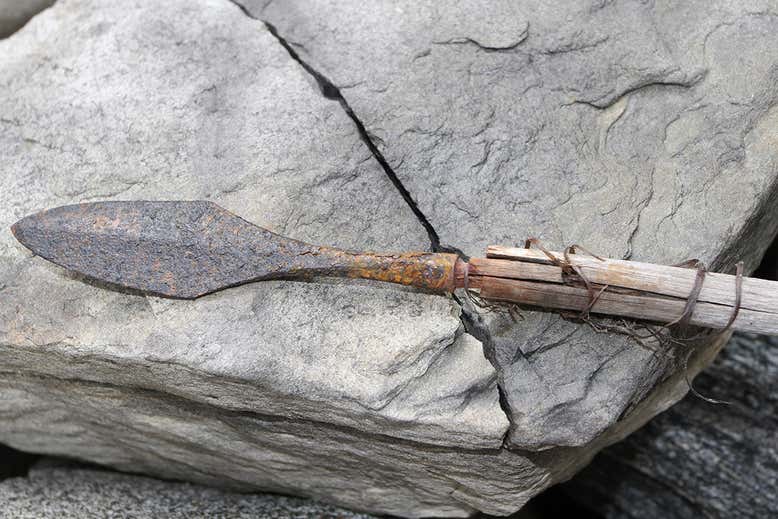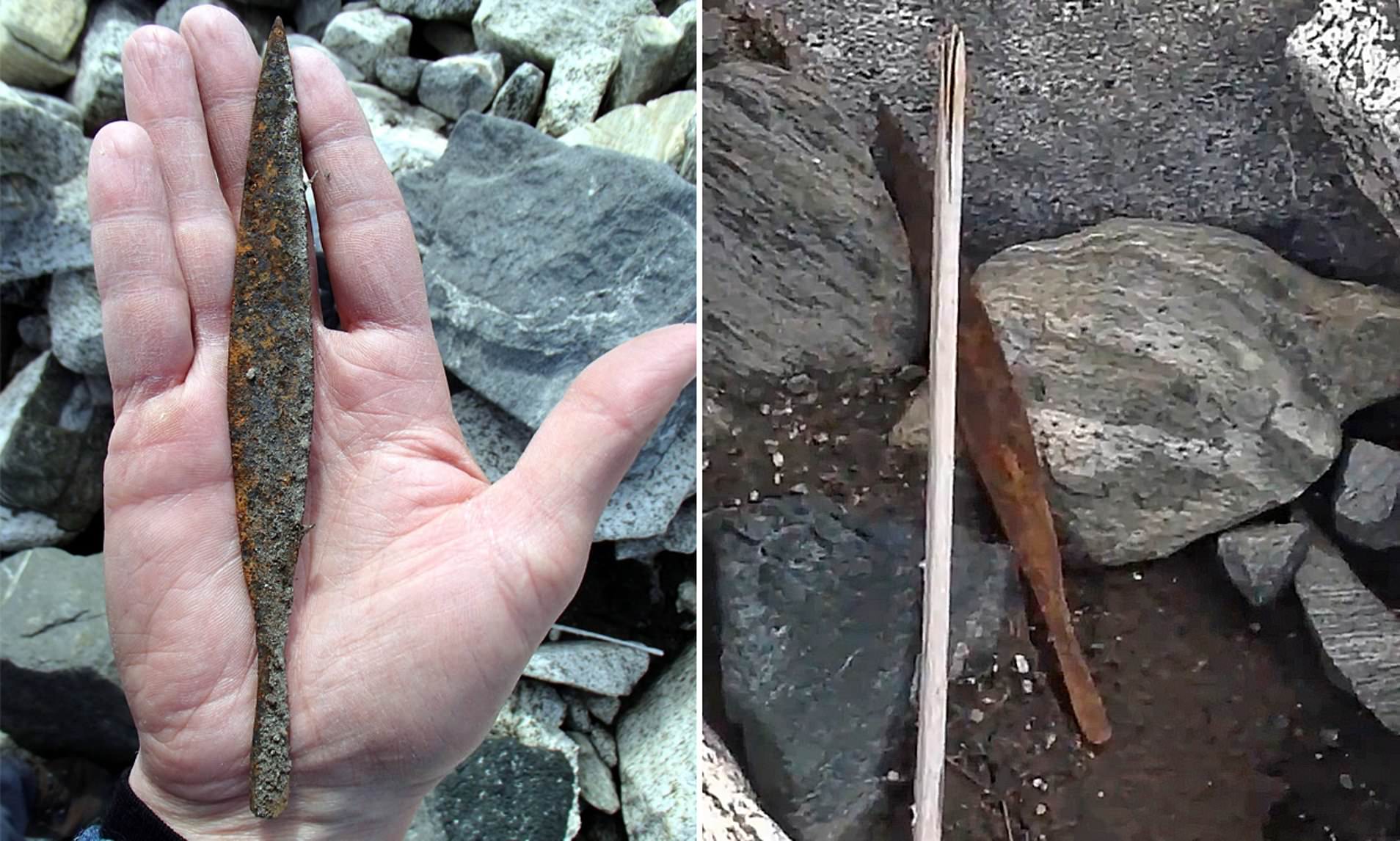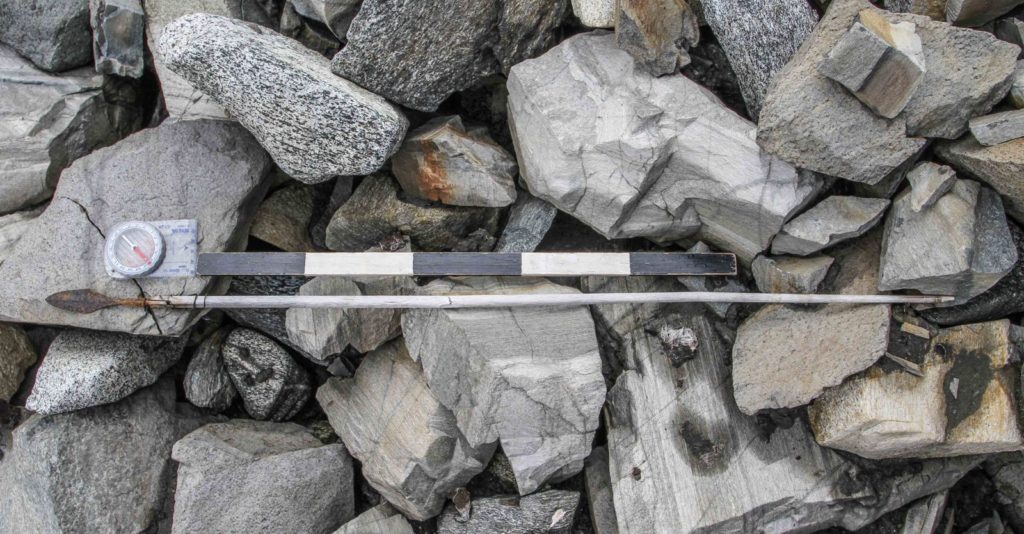
Glacier Archaeology Program, Innlandet County Council
An amazing number of arrows dating from the Stone Age to the medieval period have melted out of a single ice patch in Norway in recent years due to climate change.
Researchers from the Universities of Cambridge, Oslo and Bergen found a total of 68 arrow shafts, some with arrow heads still attached or nearby, and many other artifacts. Almost all of the items were found on an area of mountainside in Jotunheimen, a region of southern Norway.
Based on radiocarbon analysis, the oldest arrows dates from around 4100 BC while the most recent are from roughly AD 1300.

Arrowheads of all sorts of various materials survived the ages, including bone, slate, iron, quartzite and one made of mussel shell. A few arrowheads even retain the twine and tar used to fix them to their wooden shaft.
In addition to the arrows, the other artefacts from the site include a stunning 3000-year-old shoe and textiles that the archaeologists say were more than likely used to package meat.

The finds represent a “treasure trove”, says William Taylor at the University of Colorado Boulder, who wasn’t involved in the work. He notes that it is very unusual to recover so many artefacts from melting ice at one location. “You might expect a handful of items if you were lucky,” he says. “It’s extremely rare and extremely important.
As the ice shifted and melted over the years, the artifact were moved from where they were originally dropped or left, which makes it hard for researchers to pinpoint exactly where the majority of the ancient activity took place.
Either way, it is an extremely exciting and interesting find and only sheds a little more light as to how life was all those years ago.





